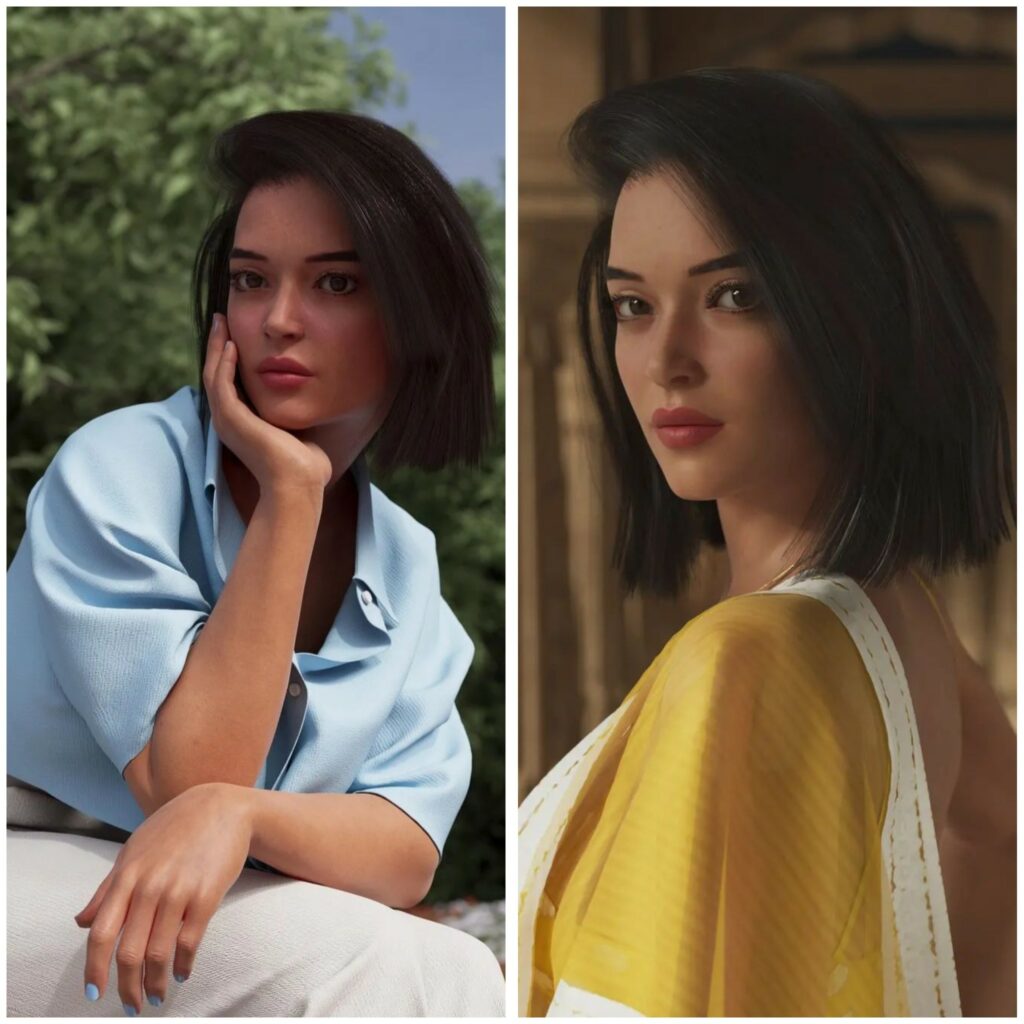Social media platforms are a huge part of everyone’s life today. Regarded as entertainment and used only in the free time a few years ago, today it is the most influential domain in the world when seen from a business-customer perspective. Apart from the storefront, social media platforms are being used by brands to interact and connect with people, identify consumer needs, stay in tune with the changing demands and deploy various promotional campaigns. With technology influencing the preferences of people, the social media marketing domain has evolved and has introduced the concept of virtual influencers. As the popularity of virtual influencers on social media platforms is on the rise today, seeing them reside in the Metaverse is not far away. Metaverse is that marketing mantra offering every business an opportunity to be heard and seen! Maybe it’s the ability to be accessible at all times, the refreshment of new visuals, or just the synergy of all M’s that says Marketing in Metaverse has the strength to Motivate users towards a purchase, Mesmerize existing customers, and Monetize services for a long time to come.
With the virtual world pervading every industry nowadays, will the fashion industry be immune to a digital existence? Not at all. In fact, the fashion industry can be seen blooming in the reality of the virtual world.
Let’s walk the ‘virtual influencer’ path and see what makes this concept tick.
What is a virtual influencer?
A virtual influencer is a fictional character being deployed on digital platforms with the purpose of influencing millions at one go. The computer-generated virtual humans are a current favourite with brands queuing up to collaborate and be a part of an innovative world of influencer marketing. Computer graphics and motion capture technology helps create these models in most cases to resemble people in the real world. Virtual influencers promote brand products and services by showcasing catalogues in a compelling way and engaging customers in interactions by acquainting them about various offers that are in store.
The best marketing strategy for the fashion industry today
Digital existence has become extremely important for brands, not just because everyone else is doing it but to be able to count the blessings it has to provide. Digital fashion experiences bring major changes from the implementation of these new concepts, for the good.
For instance,
1. Brands get the opportunity to develop their very own virtual avatar and create a brand personification that is so superior that it resonates with generations to come.
2. Brands have the flexibility to design how the virtual influencers dress, how they talk, and what the background and the location looks like without any real-life restrictions.
3. Virtual influencers reduce management costs. Resources required for renting places, travel, photoshoots, hair, and makeup get eliminated.
4. Personalizing content becomes easier by allowing businesses to give the influencer a personality that their customers resonate with or would love to see.
5. Virtual influencers discard the possibility of any controversy as the brand can completely control what their virtual influencer is saying or doing.
6. Virtual influencers are reusable and prove to be a sustainable strategy.
7. Virtual influencers take part in virtual fashion shows and get featured in magazines. They make the brand reach a global audience in no time.
Using virtual influencers is like submerging the brand in digital waters only to come out drenched with brand recognition. Talking about engagement, virtual influencers boost conversion rates by making sense to the younger audience that mic drops relevance in conversations that they have with everyone today.
Psst! The numbers want to tell us something too!
Gartner predicts that CMOs will dedicate 30% of their influencer and celebrity budgets to virtual influencers by 2026.
CGI models ft. AI
AI-powered virtual influencers serve authenticity on a silver platter and make sure the entire experience is worth investing in. AI drives perceptive and quick-witted behavior amongst digital humans. For example, Huawei has introduced Yunsheng to the world. She is powered by AI. The virtual human as a spokesperson of the brand is unique and with her AI capabilities she is sure to have a streak of fame in the time to come. Puma has developed a virtual influencer known as Maya to promote its sneakers in Southeast Asia. Maya has been developed with the help of an AI platform that maps the faces and psychographics of people in SEA to incorporate looks and values to turn into a persona that is relatable to the audience.
Famous fashion brands collaborating with virtual influencers
Do you remember Barbie? Of course you do! Her immaculate fashion sense and styling has always been an awe-inspiring factor in everyone’s life. Although the term virtual influencer has hit the world just recently, Barbie dolls were that prelude to how a fictional character could not just carry off but teach everyone a thing or two about fashion, being the ultimate fashionista that she has always known to be. Today, Barbie has a style page on Instagram that displays how she still is at the top of her fashion game. With Barbie ruling the influencer game for decades, technology has just promoted the concept to a real life like experience that has changed the way these influencers look and interact but not the agenda of helping fashion put its best foot forward.

A French luxury fashion house known as Balmain was seen working with a virtual influencer known as Shudu. She is the world’s first digital supermodel. Now that’s sure to make you curious and go through her profile, isn’t it?
Recently, Shubhika Sharma, designer and creative director of Papa Don’t Preach found herself in the limelight for becoming the first Indian designer to showcase garments in Metaverse using virtual humans. With ‘all things virtual’ being in vogue today, the digital fashion industry in India can also be seen basking in fame with the arrival of a virtual influencer known as Kyra. She has been created to collaborate with brands and impact the purchase behavior of customers through different campaigns.

Sculpting a virtual influencer for a brand can be challenging. With freedom of creativity, the virtual influencer can have traits that suit the garments and an appeal that suits the products. It is important to have a deep understanding of the life you are preparing the influencer to lead. Like how a good screenplay helps the film take flight amongst audiences, the virtual influencer should have an intriguing life story; hobbies and all that reflects the taste of the brand to entice customers in its legacy.
Brands need to look at the virtual space as the new marketplace. Personalization through an avatar is the opportunity that brands need to explore to make a difference in this age of a Dave new world.



